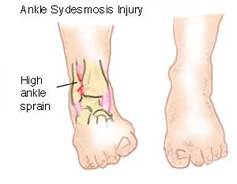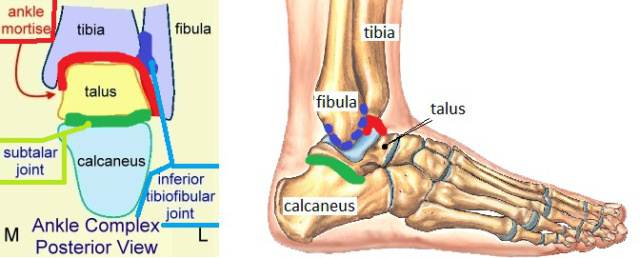
This week we are going to look at what many consider one of the most debilitating sports injury, the dreaded High Ankle Sprain!
What is the difference? Hold on for this technicality....a high ankle sprain is above the ankle joint; while a regular, good old ankle sprain is below the ankle joint. The major difference is the amount of connective and soft tissue involved. What the brain will do in this instance is allow the muscles and ligaments to go slack so as not to put a sudden and uncontrollable tension on the bone tissue. This normally prevents some type of fracture to the two bones that make up the ankle joint. (Tibia & Talus). The recovery is slightly different as it does affect more of the muscles.
Normally this is treated with rest, ice, ultra sound, and electric stimulation. What I have found to Make Them Better is to make sure that the structures are in structural alignment to ensure that the tissue involved is placed in a position to allow healing to take place. Muscle Release Therapy, MRTh® places the proper tension on the joint itself by balancing the unnatural tension that developed during the trauma. Below is an image of the ankle joint. The bones marked tibia and talus make up the ankle joint and the talus must sit directly on top of the calcaneus or heel bone. Use of the joint is almost immediate and recovery is shortened considerably as the tissue begins its healing process without strain.
If you want to find out more about your body's accommodation factor, give us a call and we will be glad to discuss this with you. If you have a nagging ankle, knee, hip or back pain, just maybe it is that old ankle sprain you from your high school days.
Thanks for reading and remember there is always...
a REASON TO HOPE!
Dennis

 RSS Feed
RSS Feed
